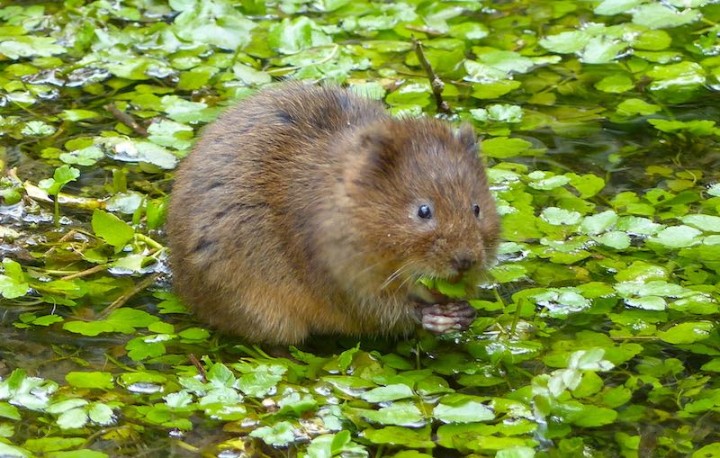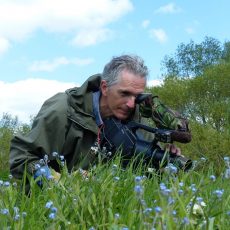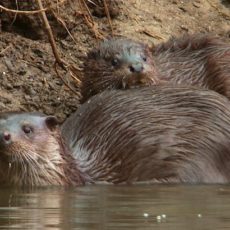Guest post by Andrew Fusek Peters
Four years ago, when I was still working as a children’s author, if you had told me that I would hug nearby hedgelines, crawl through muddy fields, and stand in sad imitation of a tree in order to photograph hares, stoats and short eared owls, I would have laughed.
The hill above my village was for long walks, dreams, poetry, stops to chat to locals and enjoy the view over the Shropshire valleys I have lived in all my adult life. A breakdown and recovery from severe clinical depression in my mid forties changed everything.
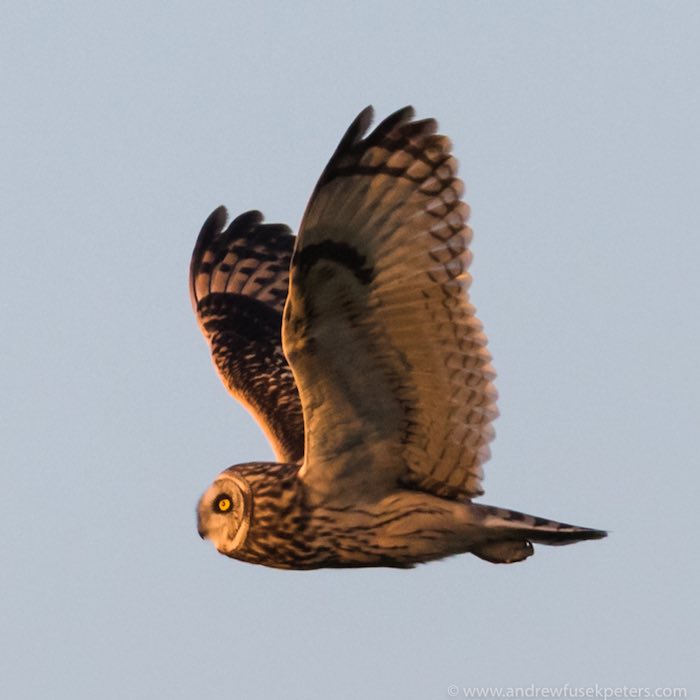
Coming through, aside from getting professional help, one of the big healing factors was nature. In my case, this was and continues to be the spread of Shropshire upland and valleys in a ten mile radius from my house.
I had of course seen hares, and badgers, as my occasional short night time companions, flared and frozen by the beam of headlights. I knew, subconsciously, that the hawk I recently clocked at over 45mph diving along the ancient drover’s route that dips into my village and then makes its way to London {the old crumbling stone at the corner still says London, 167 miles} was a sparrowhawk.
But wildlife was a speck at the corner of my eyes, there but not noticed. The camera, and my education in using it transformed the landscape and my very reading of nature deepened. The first day this happened was when I asked a wildlife photographer how he managed to get such excellent shots of hares. I was told that the human form is a threat {no surprises} but crawling and thereby presenting a less dangerous silhouette can do the trick. It did. Suddenly, hares stopped running away. They preened a few yards in front of me, even went to sleep. Quietness and moving slow is about respect to the species that cling on, that live alongside us in an uneasy relationship.
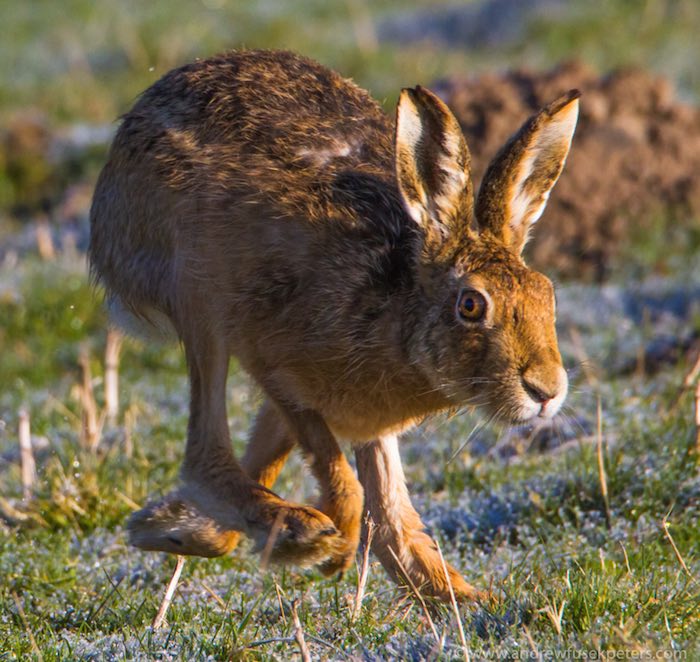
I began to imbibe field craft. A hedge is a photographer’s best friend, and even a humble metal gate somehow acts like Harry Potter’s cloak. As you get closer, there is the possibility of wonder. Here, in all its whiskered or winged glory, is greatness beyond my creativity. And engaging with wildlife made me listen to local voices – farmers, conservationists, walkers. The hare is hounded. Round here, coursing happens, late night lamping by men {always men} is about pitting vast headlights and knowledge that an animal freezes, against smallness and vulnerability. This is not fieldcraft, but massacre and numbers are a fraction of what they were. I see the fragility of it, and hope that my pictures may carry politics within – the showing of beauty a reflection that there is much to lose.
There is hope. I came out darkness, the sense of wanting to end it all. Such an overpowering illness as this put great stress on my family. When I am folded into the great burnished gold of sunset lying on the feathers of the short-eared owl, or hardly breathing as a stoat bounds towards me, this hill above my house is a haven of hope that wilderness lies within us. We must cherish it, protect it, celebrate it, fight for it.
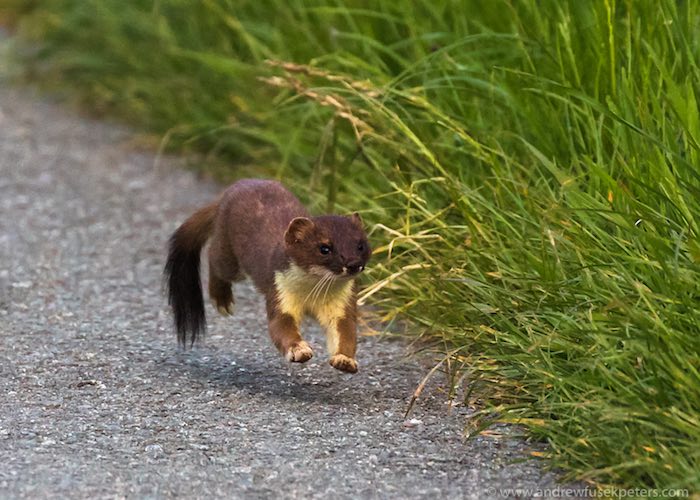
A couple of weeks ago, I began to study the local mammal tracks on my hill, and worked out that the hares were running through the woods, where the bluebells also ran riot. In my head, I could see a vision of hare among all that pomp of purple colour. And the next day {I wish this happened more often}, I was in the woods with my kit when three hares ran past, a quick glimpse, then gone. But in that group, I knew there was a fourth, who five minutes later came ambling up the path.
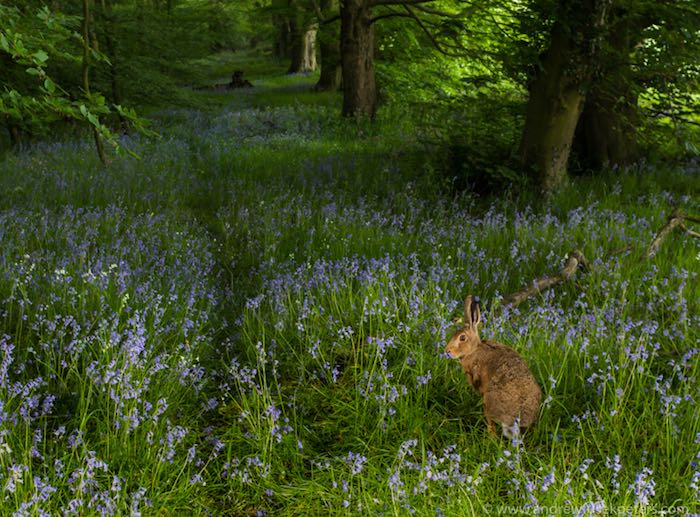
I knew by now that if you were still enough, a hare could nibble its way towards you and not even see you. This hare did, as I kneeled almost in prayer, silent shutter, my camera shaking with excitement, hoping that one shot was sharp. I sent it to Springwatch and Chris Packham said that it ‘encapsulates spring, gratuitously bluebelly!’
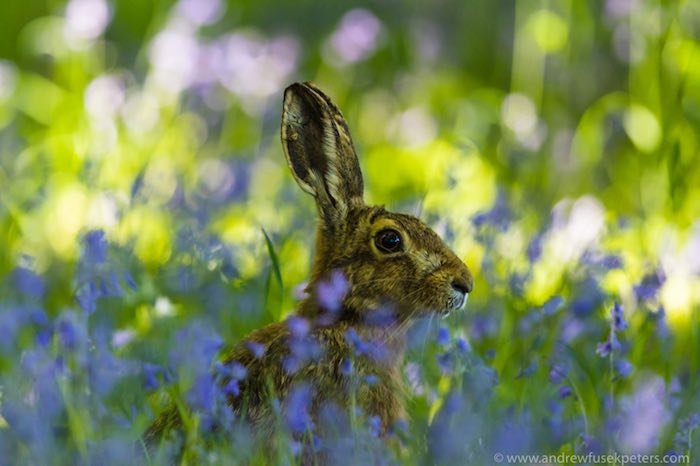
Andrew Fusek Peters
www.andrewfusekpeters.com
Twitter: @2peters

